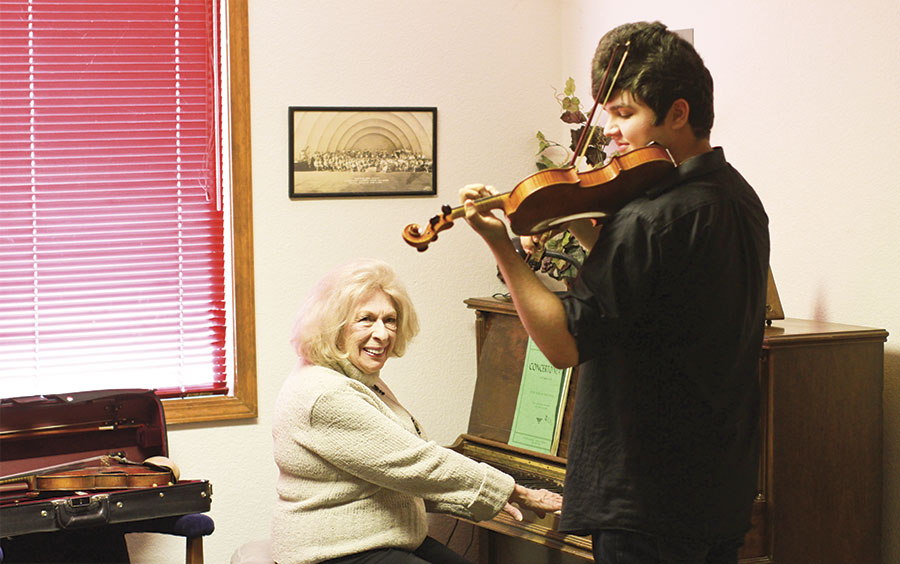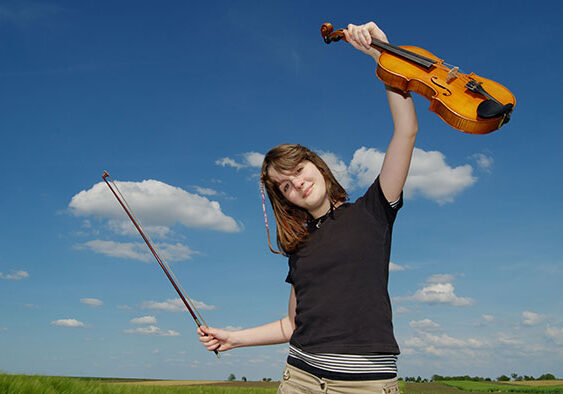Nearly all children love music. “But to learn to handle a musical instrument with the proper skill,” says Arlene Gattuso of Redding’s Gattuso Violin Studio, “to be capable of making good music, is quite another thing.”
Gattuso, who came to Redding in 1990, has been teaching violin for over 30 years. Many of her students have gone on to professional careers. “Though I only teach classical music, my former student Sid Walker excelled in fiddling,” says Gattuso with obvious pride. “He toured for many years out of Nashville with various well-known country music bands, including Charlie Daniels.”
John Maich, now 18, began studying with Gattuso when he was 5 years old. His parents wanted something more than a good technical teacher. “We really appreciated Arlene’s great musicality and expression,” says Rudy Maich, John’s father. “And she was able to impart that.” With high compliments for both his musicality and his bowing technique, John Maich took first place in the 2012 Shasta Symphony Aria and Concerto Competition.
At 19, Gattuso studied with Vera Barstow. A well-known concert performer in the 1920s, Barstow is remembered as one of America’s best violin teachers.
“There is not only a great sense of accomplishment in learning to play a musical instrument well,” says Gattuso, “but great value in one’s life in being able to play with other people.”
Gattuso is very concerned about the fate of string teaching in California. She cites as good news the fact that fourth graders in several Redding public schools are being taught to play violin during regular school hours. “Hopefully, it not only increases brain power but provides the opportunity to discover untapped musical talents and interest,” she says. To date, many studies show marked academic improvement in students who also study music.
“It would be nice if other schools would adopt such a program,” suggests Gattuso. “The whole thing sounds very good to me.” Music curriculums have vanished from most California schools. “If there is no musical education at all,” says Gattuso, “and if parents have a desire to expose their child to some form of music teaching, they could sign up for private music courses.”
She recommends the recorder as a beginning instrument for very young children. “If a child is more serious,” she explains, “that child can begin on a more difficult instrument after maturing a little.”
Though no more difficult than most instruments to master, the violin can be the most frustrating for the beginner. Unlike many instruments, violins can produce any note in their range, including those that have listeners covering their ears in shock (if not awe).
An in-tune piano can produce a pleasant musical sound immediately. The violin is much different. The fingers of the left hand must be placed with exacting precision. Not so obvious, unless you’ve ever tried to play a violin, is the difficulty presented by the bow itself. Because of its naturalness, Gattuso teaches what many call the Russian bowing method, which she learned from Vera Barstow.
“My biggest effort in teaching is toward a nice sound that is in tune!” she says. This resolve has its origin in Gattuso’s own training. She began in Long Beach, CA, where she was born. “My mother taught me from the age of 7 until 12,” she recalls. Her first professional instructor was an excellent player but a lackluster teacher. “He heard me play off pitch every week and said nothing about it,” she says.
“Even today,” she continues, “it is often thought that if you play off pitch there is no cure.” Neither she nor her mother believed this canard, however. Six months later, they found another teacher, Leah Seykora, who proved it a fallacy. “And I prove it all the time in my own teaching,” Gattuso confirms. “By playing along with a student on the piano, those pitches are impressed on the brain. How long varies widely, but eventually everyone plays in tune.”
Gattuso introduces note-reading immediately. “When incorporated gradually,” she explains, “it is very easy for even the youngest students.”
Her studio produces two recitals back-to-back each year. “I have too many students to give only one recital,” she says. Despite a schedule that gets busier each year, Arlene Gattuso has no plans to retire. “What’s next for me is more teaching. I love it.”
Posted in: Art & Music, Local Business
Comment Policy: All viewpoints are welcome, but comments should remain relevant. Personal attacks, profanity, and aggressive behavior are not allowed. No spam, advertising, or promoting of products/services. Please, only use your real name and limit the amount of links submitted in your comment.
You Might Also Like...
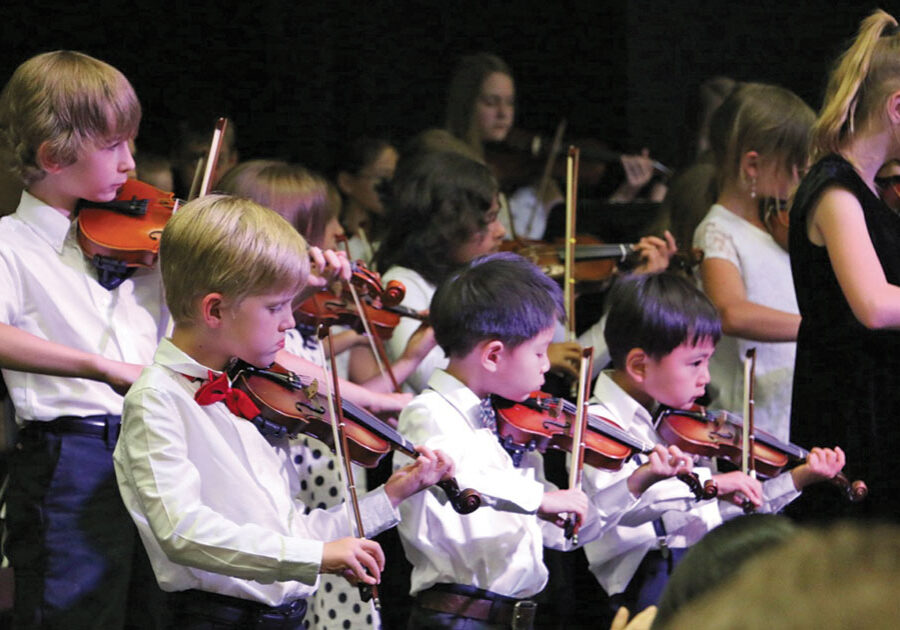
Strings in Schools – Violin, Flute and Kindermusik in the North State
Violins come in eight sizes, the smallest size merely 14.5 inches in length from scroll to end button. This adorable instrument fits snugly into the arm span of very young […]
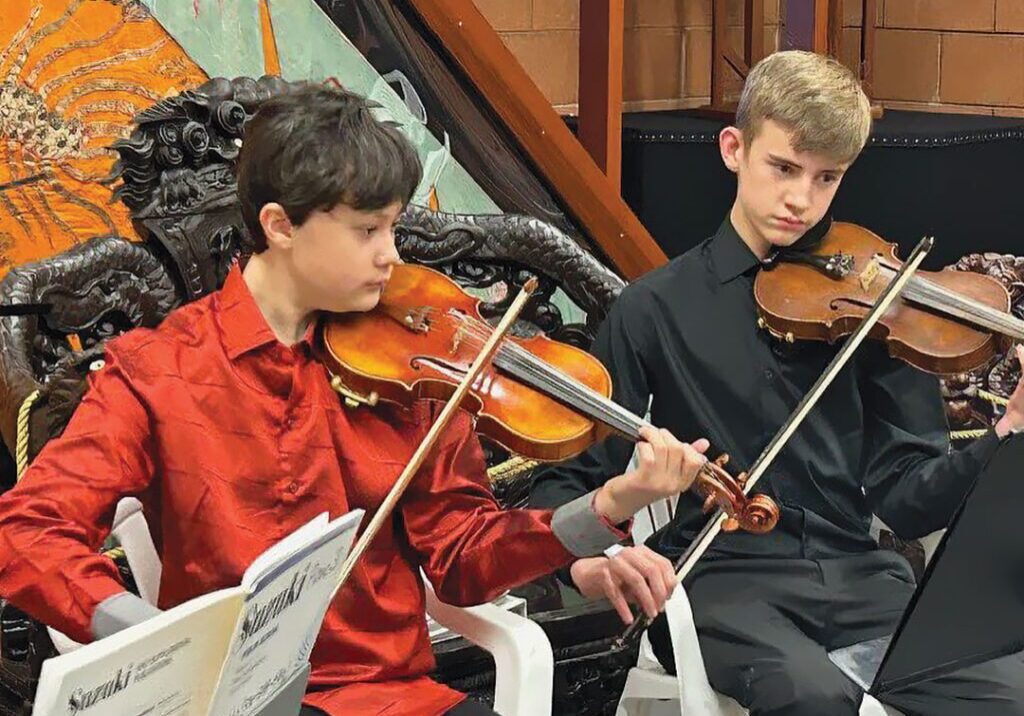
North State Youth Orchestras Provide Extraordinary Musical Experiences
Young musicians have two valuable ensemble opportunities for the development of musicianship skills in Butte and Shasta counties. The Shasta College Concert Orchestra and the Butte MTAC Youth Orchestra provide […]
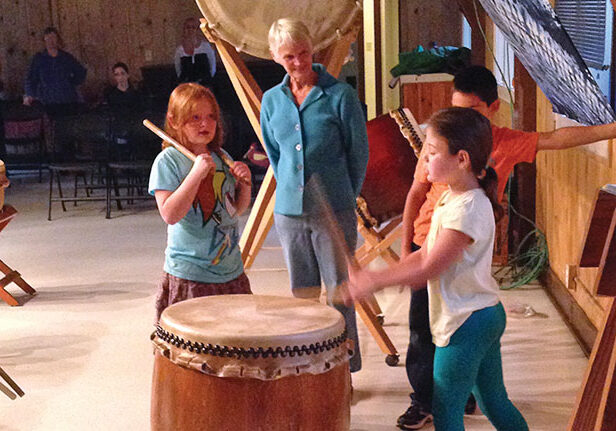
Hai Ho! Hai Ho! It’s Off to Taiko We Go! – In Mt. Shasta: Taiko Classes for Youth
Taiko is an ancient Japanese style of drumming that, in the last half century, has undergone an evolution into an ensemble performing art. If you’ve been fortunate enough to have […]
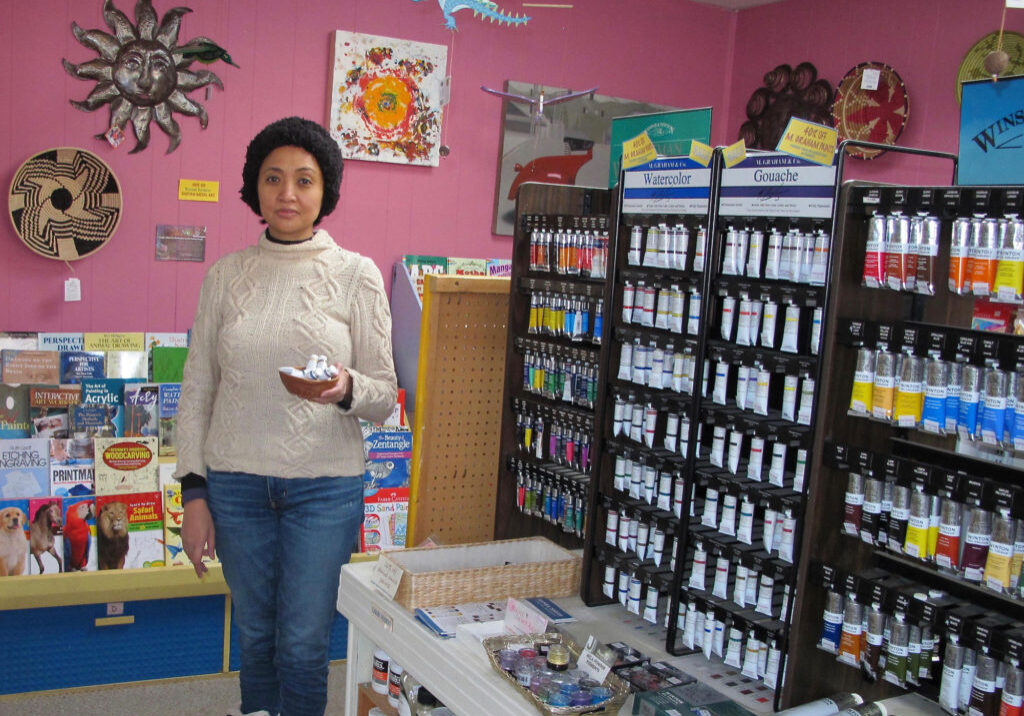
Local Art Stores Offer Inspiration, Knowledge and Quality
Visiting an art supply shop can feel a little like being a kid in a candy store for artists and art lovers. With everything from rich pastels, delicate watercolors and […]


